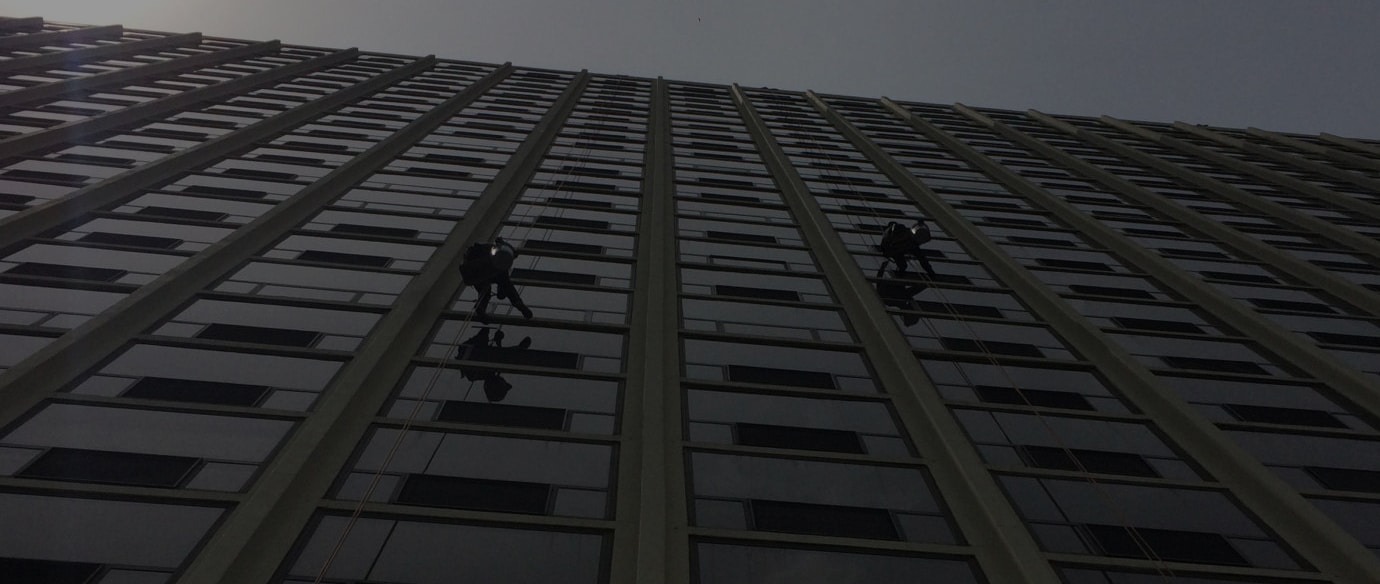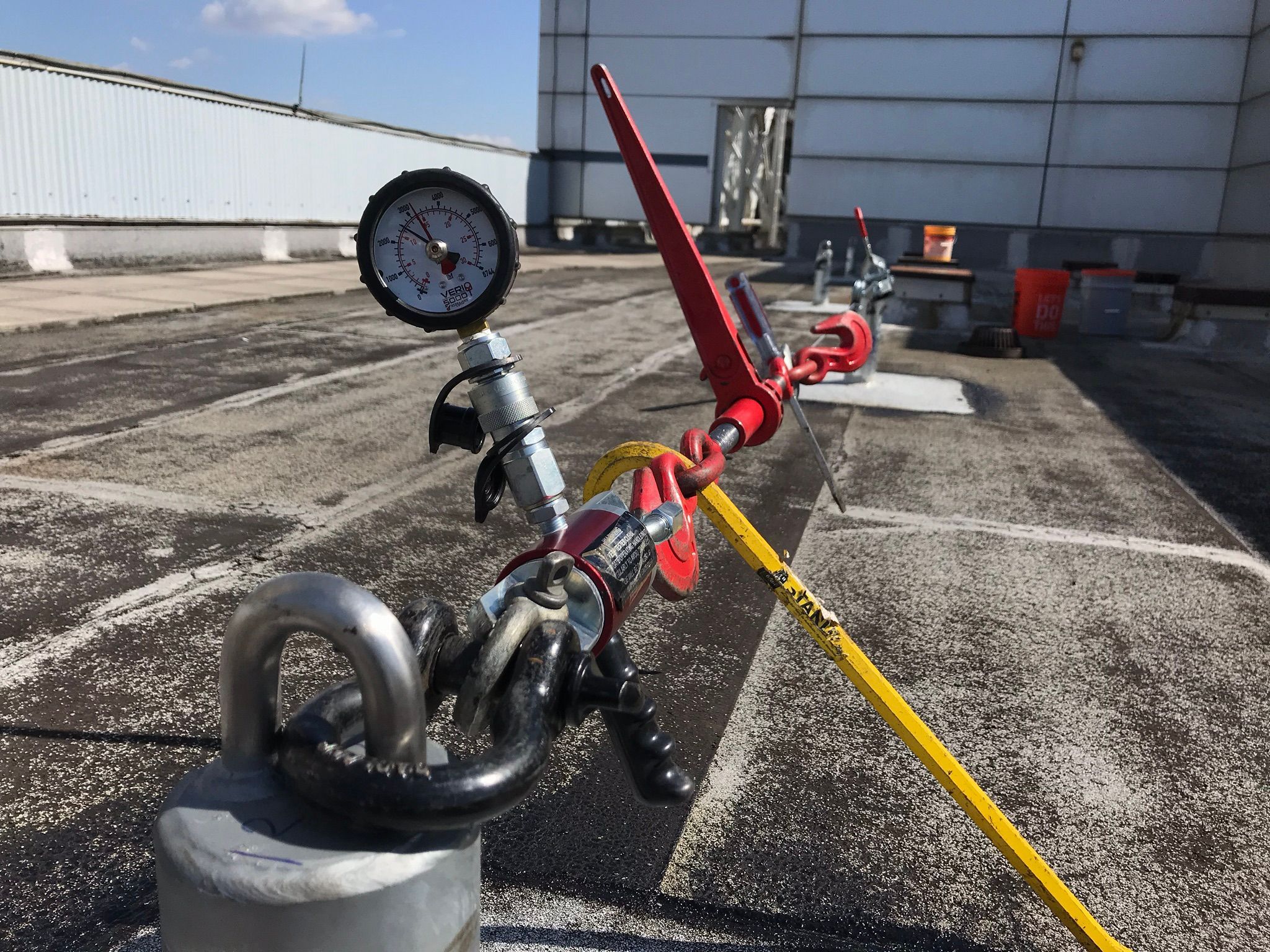- OSHA 1910.140 defines the minimum requirements for Personal Fall Protection Systems (PFPS) used in general industry. If your property uses harnesses, lifelines, or lanyards for rooftop or facade work, this regulation directly applies to you.
Failing to comply can result in safety violations, fines, and worker injuries.
What Is Covered Under OSHA 1910.140?
This standard addresses how to properly design, inspect, use, and maintain PFPS equipment, including:
- Full-body harnesses
- Anchor points
- Lanyards and self-retracting lifelines (SRLs)
- Connectors and D-rings
- Shock absorbers
It applies to all general industry environments where workers are exposed to fall hazards — especially common on rooftops, building perimeters, and exterior maintenance work.
Key Requirements of OSHA 1910.140
- Harness Design and Use
- Only full-body harnesses are allowed — body belts are prohibited.
- Harnesses must distribute forces across shoulders, thighs, and pelvis.
- D-rings must withstand a minimum of 5,000 lbs of tensile load.
- Anchor Points
- Must support at least 5,000 lbs per employee attached.
- Alternatively, must be designed by a qualified person and have a safety factor of 2:1.
- Must be inspected regularly and certified annually.
- Lifelines and Lanyards
- Self-retracting devices must limit free fall to 2 feet.
- Shock absorbers must limit arresting force to 1,800 lbs or less.
- All components must be compatible and from approved systems.
- Inspection and Maintenance
- All PFPS must be inspected before each use and at least annually by a competent person.
- Damaged, deformed, or corroded equipment must be removed from service immediately.
Why It Matters
Using non-compliant or outdated fall protection equipment not only puts workers at risk but can lead to:
- OSHA citations and fines
- Insurance claims or denials
- Liability exposure for building owners
- Project delays due to unsafe work conditions
Shine On Anchors Ensures Compliance With OSHA 1910.140
At Shine On Anchors, we help property managers and contractors stay fully compliant with:
- Certified anchor point installations
- Personal fall protection equipment selection and inspections
- PFPS system training for workers and supervisors
- Annual recertification services
Whether you’re managing an office tower or university campus, we ensure your fall protection system is OSHA and ANSI compliant — giving you peace of mind and liability protection.
📞 Need help with OSHA 1910.140 compliance?
Contact Shine On Anchors to schedule a system review and certification.Important things to know, review more articles OSHAs
OSHA’s – 1910.22 General Requirements
OSHA Recognized 3-Levels of Skill- Work at Height
Important Definitions per OSHA
OSHA’s – 1910.140 Personal Fall Protection Systems
OSHA’s – 1910.29 Fall Protection Systems & Falling Object Protection- Criteria and Practices
OSHA’s – 1910.28 Duty to have Fall Protection & Protection from Falling Objects
OSHA’s – 1910.30 Training Requirements
OSHA’s – 1910.23 Ladders- Fixed and Portable
Check our anchoring services
For a free estimate, call us today at (773) 227-4522 or email anchors@shineongroup.com



